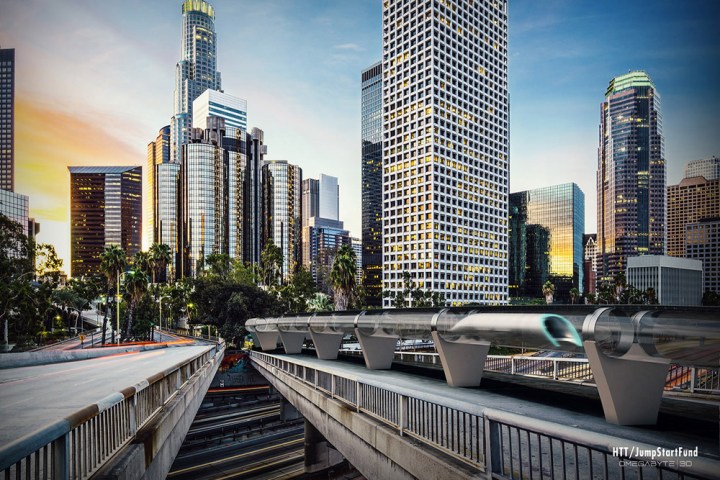
HTT’s proposed Slovakian Hyperloop project would connect three European cities in Vienna, Austria, Bratislava, Slovakia, and Budapest, Hungary. All told, the longest distance between any of the desired locations would be no more than 125 miles (Bratislava to Budapest) with a route like Vienna to Bratislava only clocking in at roughly 50 miles by transport. Compared to the 380 some miles required for a San Francisco to Los Angeles Hyperloop, Slovakia’s is entirely within the scope of supposed Hyperloop technology.

“Slovakia is a technological leader in the automotive, material science, and energy industries, many of the areas that are integral to the Hyperloop system,” said HTT CEO Dirk Ahlborn in a statement. “Having a European Hyperloop presence will incentivize collaboration and innovation within Slovakia and throughout Europe.”
If a functioning Hyperloop system does get up and running in Slovakia, commute times between each of the three cities stands to revolutionize the way people would travel in the region. For instance, the trip between Bratislava and Budapest would take passengers roughly 10 minutes to complete at 760 miles per hour (HTT’s proposed top speed of its pods). Moreover, traveling from Bratislava to Vienna would only take around eight minutes at similar speeds — a trip that would take just shy of an hour otherwise.

It is worth noting that while an agreement has been signed, nothing is definite regarding actual construction and (in the future) operation of a Hyperloop track. Aside from the fact only Slovakia has signed with HTT at the moment — it remains to be seen if Hungary or Austria maintain the same willingness for such a project — proposal and funding stages still need to be successful for the plan to see the light of day.
In addition to having an eye on Slovakia, HTT is currently awaiting word on a recently submitted construction permit allowing it to break ground in Quay Valley, California. If approved, the company intends to begin building a five-mile Hyperloop test track alongside the I-5 freeway. Assuming everything goes according to plan (does it ever, though?), HTT plans to have a fully operational, passenger-ready Hyperloop system up and running by 2018.
Editors' Recommendations
- New battery design could mean EVs charge in only 10 minutes
- From the moon to mass production: 10 pieces of modern tech indebted to Apollo


